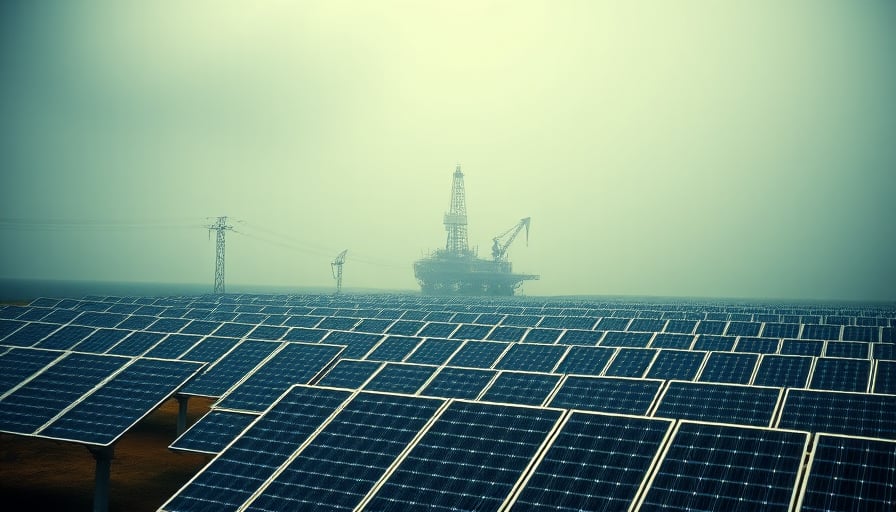TotalEnergies SE Issues Revised Energy Outlook and Announces Strategic Infrastructure Commitment
TotalEnergies SE has released a comprehensive Energy Outlook that projects a sustained increase in global oil demand through the mid‑2020s, with a peak expected around 2040—approximately a decade later than previously forecasted. The revised scenario reflects the company’s assessment that geopolitical tensions and heightened concerns over energy security are currently impeding progress toward international climate targets. In light of these challenges, TotalEnergies has also updated its 2050 pathways to better align with the new macro‑environment.
Supply‑Demand Fundamentals
The Outlook underscores a continued expansion of primary oil consumption, driven in part by growth in emerging markets and the gradual substitution of natural gas in power generation. While renewable penetration is rising, the current energy mix remains heavily weighted toward fossil fuels. The company projects that, even with aggressive demand‑side efficiency measures, the gap between supply and demand will widen until 2030, after which a gradual deceleration is expected. This trajectory is supported by recent production data from major producing regions:
- OPEC+: Production maintained at 35 million barrels per day (mb/d) in 2023, with a projected increase of 0.3 mb/d annually through 2025.
- US Shale: Production held steady at 12 mb/d, with a modest 1 % annual decline anticipated due to aging wells.
- Non‑OPEC: Production growth of 1.5 % per year, primarily from Canada and Brazil.
Commodity price analysis indicates that Brent crude has stabilized near $90 / bbl in the past six months, reflecting a balance between supply constraints and demand growth. This level is expected to persist until 2028, after which the price may experience volatility linked to policy shifts and geopolitical events.
Technological Innovations
TotalEnergies has highlighted several technological advances that are reshaping the production and storage landscape:
- Enhanced Oil Recovery (EOR): Deployment of CO₂‑EOR in mature fields has increased recoverable volumes by up to 15 % in the Gulf of Mexico and the North Sea.
- Digital Twins: Implementation of digital twins for pipeline monitoring has reduced maintenance downtime by 12 % and improved leak detection rates.
- Hydrogen Storage: Investment in large‑scale underground caverns for hydrogen storage aims to facilitate grid balancing and support renewable integration.
These innovations not only improve efficiency but also mitigate some of the environmental impacts associated with fossil fuel extraction.
Regulatory and Policy Impact
Regulatory developments continue to shape the energy transition. The European Union’s new carbon pricing mechanism, which sets a 2025 cap of €80 per tonne of CO₂, is influencing investment decisions in the region. Simultaneously, the United States is advancing its clean energy standards, with California setting a 2035 renewable portfolio standard of 100 %. These policy shifts are prompting traditional energy companies to diversify their portfolios, as exemplified by TotalEnergies’ recent announcement of a ten‑year power supply agreement for a data‑center project in Spain.
Infrastructure Development – Spanish Data‑Center Power Supply
In a strategic move to bolster its renewable footprint, TotalEnergies has secured a decade‑long power supply agreement for a state‑of‑the‑art data‑center in Spain. This partnership reflects the company’s commitment to invest in resilient energy infrastructure that supports the digital economy. The agreement includes provisions for:
- Renewable Power Procurement: 70 % of the electricity will be sourced from on‑site solar PV installations, with the remaining 30 % drawn from the national grid.
- Energy Storage: A 30 MWh battery system will buffer peak demand, ensuring uninterrupted operations.
- Carbon Offset Measures: The project will incorporate tree‑planting initiatives to offset a portion of the data‑center’s carbon footprint.
This initiative underscores TotalEnergies’ balanced approach: maintaining its core oil and gas business while progressively expanding into renewable and digital infrastructure.
Long‑Term Transition Trends
While the outlook signals a cautious optimism regarding short‑term demand, it simultaneously acknowledges the long‑term energy transition trajectory. TotalEnergies projects that by 2050, renewable energy sources could account for up to 35 % of global primary energy supply, contingent upon the pace of technological adoption and policy alignment. The company’s updated scenarios reflect a more realistic assessment of climate objectives, factoring in the potential delays caused by geopolitical uncertainties.
Conclusion
TotalEnergies SE’s revised Energy Outlook and its strategic infrastructure commitment in Spain illustrate a company navigating the complex interplay between enduring fossil fuel demand and the accelerating shift toward renewable energy. By integrating supply‑demand fundamentals, technological innovation, regulatory frameworks, and infrastructure development into its strategy, TotalEnergies positions itself to address both immediate market dynamics and the broader, long‑term objectives of the global energy transition.
